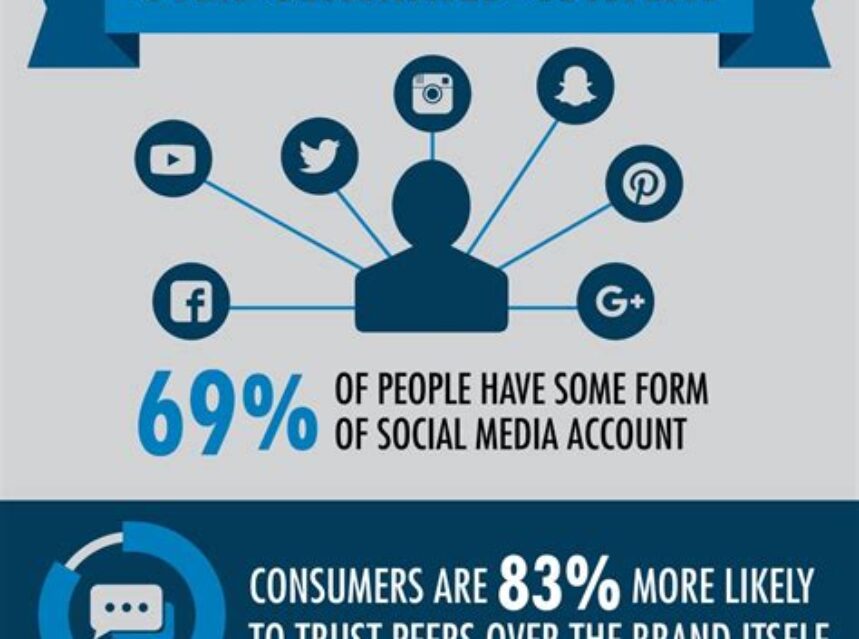Utilizing User-Generated Content for Social Media Marketing

Discover the benefits of user-generated content (UGC) in marketing strategies, best practices for sourcing UGC, and tips for incorporating UGC into social media plans. Measure UGC impact on engagement.In today’s digital age, user-generated content (UGC) has become a powerful tool for companies looking to enhance their social media marketing strategies. Understanding what UGC is, its advantages in marketing, and how to effectively source and incorporate it into social media plans are all crucial aspects of a successful marketing campaign. This blog post will delve into the world of UGC, discussing its definition and importance in the digital marketing landscape. We will explore the various benefits of utilizing UGC in marketing strategies, as well as provide best practices and tips for sourcing UGC content. Additionally, we will discuss how to effectively incorporate UGC into social media plans and measure its impact on engagement. By the end of this blog post, you will have a comprehensive understanding of how UGC can be leveraged to drive engagement and boost your brand’s online presence.
Understanding User-Generated Content (UGC)
User-Generated Content (UGC) refers to any form of content that has been created by consumers or end-users, rather than by the brand or company itself. This can include anything from social media posts, blog posts, reviews, videos, and more. UGC has become increasingly important in the digital marketing world, as it provides a way for brands to connect with their audience in a more authentic and engaging way.
One of the key advantages of UGC is its ability to build trust and credibility with consumers. When potential customers see real people using and enjoying a product or service, they are more likely to trust the brand and feel confident in making a purchase. Additionally, UGC can help to humanize a brand and make it more relatable to the target audience.
In order to effectively leverage UGC in marketing strategies, brands must have a thorough understanding of their audience and their preferences. By understanding what type of content resonates with their target demographic, brands can encourage the creation of UGC that aligns with their overall marketing goals and messaging.
Overall, it is crucial for brands to recognize the power of User-Generated Content (UGC) and to incorporate it into their marketing plans. By doing so, they can benefit from increased brand awareness, engagement, and trust among their target audience.
Advantages of UGC in Marketing Strategies
User-generated content (UGC) has become an increasingly valuable tool in marketing strategies, offering a range of advantages for businesses looking to connect with their audience in new and authentic ways. One of the primary benefits of UGC is its ability to build trust and credibility. When consumers see content created by their peers, they are more likely to view it as genuine and trustworthy, leading to a stronger connection with the brand.
Another advantage of UGC in marketing is its ability to increase engagement and brand awareness. By encouraging users to share their own content related to the brand, businesses can expand their reach and create a community of loyal followers. This not only helps to increase brand visibility but also fosters a sense of belonging and involvement among consumers.
UGC also has the potential to provide valuable insights into consumer preferences and behaviors. By analyzing the content created by users, businesses can gain a deeper understanding of what resonates with their audience, allowing them to tailor their marketing messages and products accordingly.
Finally, UGC can be a cost-effective and efficient way to generate content for marketing purposes. Instead of relying solely on internally produced content, businesses can tap into the creativity and enthusiasm of their audience, resulting in a diverse range of content that can be used across various marketing channels.
Sourcing UGC: Best Practices and Tips
When it comes to sourcing User-Generated Content (UGC), there are a few best practices and tips to keep in mind to ensure that you are creating a successful UGC campaign.
One of the best practices for sourcing UGC is to actively engage with your audience. This can be done through social media campaigns, email outreach, or even in-person events. By actively engaging with your audience, you can encourage them to create and share content related to your brand or product.
Another important tip for sourcing UGC is to provide clear guidelines and instructions for the type of content you are looking for. Whether it’s a specific hashtag to use or a particular theme to follow, giving your audience clear guidelines can help streamline the UGC process and ensure that the content you receive aligns with your brand image.
Additionally, it’s essential to reward and recognize your audience for their contributions. Whether it’s through giveaways, shoutouts, or even featuring their content on your website or social media pages, showing appreciation for UGC creators can help incentivize others to participate and contribute their own content.
Incorporating UGC into Social Media Plans
When it comes to social media marketing, incorporating User-Generated Content (UGC) can be a game-changer. UGC refers to any form of content, such as images, videos, reviews, and social media posts, that are created by users rather than brands. By integrating UGC into your social media plans, you can tap into the authentic voice of your customers, build trust, and increase engagement.
Incorporating UGC into your social media strategy can be as simple as reposting customer photos and videos on your brand’s social media accounts. By doing so, you are not only showcasing your products or services, but also highlighting happy customers, which can serve as powerful testimonials. This not only fosters a sense of community among your followers, but also encourages others to share their experiences with your brand.
Additionally, leveraging UGC in the form of customer reviews and testimonials on social media can help build social proof, which is crucial in influencing purchasing decisions. By sharing real-life experiences and feedback from your customers, you are providing valuable insights to potential buyers and reinforcing the credibility of your brand.
Another effective way to incorporate UGC into your social media plans is by creating campaigns or contests that encourage user participation. By asking users to share their stories, experiences, or creative content related to your brand, you can generate a steady stream of authentic UGC that not only engages your audience, but also amplifies your brand’s reach.
Measuring the Impact of UGC on Engagement
User-generated content (UGC) has become an integral part of marketing strategies in today’s digital landscape. It allows brands to create authentic and relatable content that resonates with their audience. The impact of UGC on engagement can be measured through various metrics such as likes, comments, shares, and overall reach. By analyzing these metrics, brands can gain valuable insights into the effectiveness of their UGC campaigns and make data-driven decisions for future marketing efforts.
One of the key advantages of UGC in measuring engagement is its ability to foster a sense of community and belonging among consumers. When users are actively participating in creating and sharing content related to a brand, they are more likely to feel emotionally connected and engaged with the brand. This emotional connection can be quantified through metrics such as sentiment analysis and brand loyalty, providing a deeper understanding of the impact of UGC on engagement.
Additionally, tracking the performance of UGC across different social media platforms can provide valuable insights into how users are interacting with the content. Identifying which platforms generate the most engagement and which types of UGC resonate best with the audience can help brands optimize their UGC strategies for maximum impact. Furthermore, brands can leverage UGC analytics tools to track the impact of user-generated content on website traffic, conversions, and customer retention, providing a comprehensive view of the overall engagement impact.
In conclusion, measuring the impact of UGC on engagement is crucial for brands looking to effectively leverage user-generated content in their marketing strategies. By analyzing metrics, fostering community engagement, and tracking UGC performance across various platforms, brands can gain valuable insights into the effectiveness of UGC and its impact on engagement, ultimately driving better marketing decisions and stronger connections with their audience.



